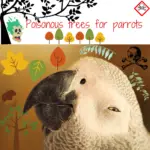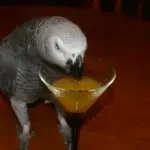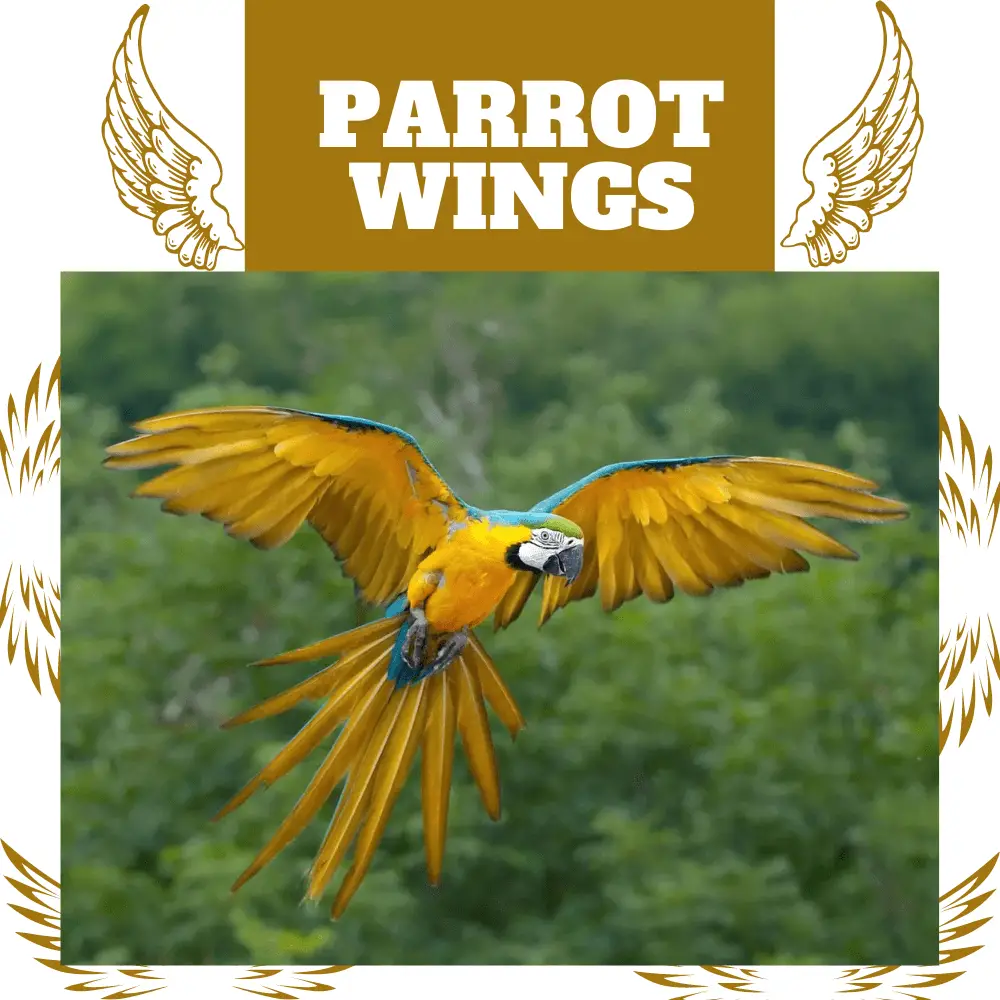
parrot wings: If I ask you the meaning of this expression, you will probably answer me that it designates the most direct path between two given points.
Now, if I say “a flying bird” to you, that’ll sound like the simplest definition of what a bird is, right? In any case, it is the most “direct” answer that I get when I ask the question at the start of my workshops in school!
Since a flying bird is obvious, how come it gets complicated when you acquire a parrot as a companion? Namely, will it be able to fly in our homes or not?
Parrot wingspan

The typical argument of pet shop assistants or psittacine breeders in favor of a “good size of wings” is: that it is easier to live with and much less dangerous.
Obviously, a bird that cannot soar in the air does not nibble or defecate on top of cupboards. It’s also easier to put him in his crate when recess is over, and he’s unlikely to land on the hot stove.
On the other hand, can we really say that it is easier to live with and less dangerous for him, the parrot? A parrot will fly for several equally important reasons:
- to please yourself
- move from A to B
- to save oneself from threatening situations
In doing so and without realizing it, he will keep in shape, increase his reflexes, improve his vision and strengthen his musculature as well as his respiratory system. Isn’t it fascinating how well all of these functions work together? Should we really be surprised since a bird is made to fly?
How to cut parrot wings
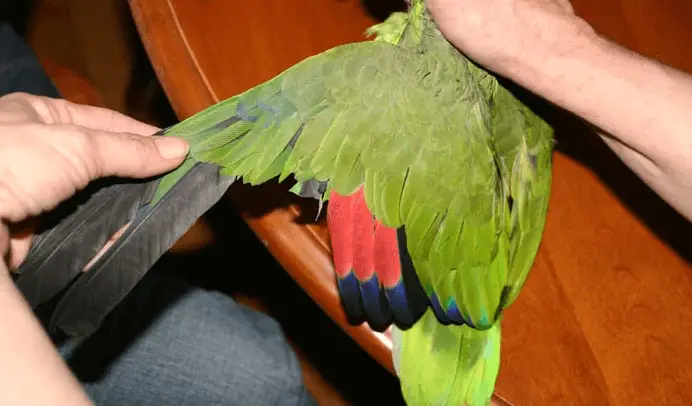
So let’s come back to our parrot with unusable wings. What options are available to him if he wants to join his favorite human? By instinct, his first instinct will be to take flight. What is in danger of happening to him?
If he has the 10 primary flight feathers trimmed, he will fall to the ground like a bag of stones, thus risking splitting the skin at the level of the wishbone, to breaking a leg or the beak.
These are painful injuries, infamously frequent, and require a long recovery. If he only has a few trimmed flight feathers? At the very least, he can slow down his fall by “sliding” on the ground.
Unfortunately, as he does not know, nor cannot navigate properly, he will end up sliding into the glass door, the living room wall, or the corner of the sideboard;

Now that the parrot has survived its descent, its adventure is not over yet! The dangers of the floor are numerous. There is crushing by a foot or a chair with wheels.
There is also flattening in the mechanism of the reclining chair or sofa. There are electric shocks with all the wires running along the walls.
There are Medor and Mimine who have easy prey to catch. These are just a few mundane situations in everyday life. Can you imagine the minefield that becomes a simple house floor for a walking parrot? Sooner or later a parrot with clipped wings will be there.
After several painful and frightening attempts, our companion, who is intelligent, will find another way to move: his human! How will he do it? Like any good New Yorker who wants to walk around town: whistling a taxi, of course! Except that at home, not all humans necessarily want to play this game.
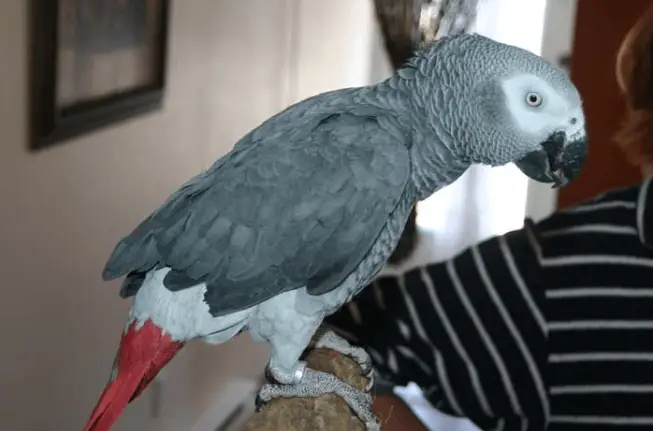
The parrot will also inform itself of the position of its group in the house by connection calls or cries. These will intensify in intensity and duration if it is not understood and we do not respond to it, nor come looking for it.
Frustration will increase in both camps and the parrot will return to its cage under the threatening words of an exasperated human. Imagine the atmosphere after several days of this misunderstanding.
A nice parrot will probably end up labeled as a “bad bird with a problem with calls”. All this because he wanted to see and follow his social group, but he could not do it thanks to the means that nature provided him … his wings!
At that precise moment, our dear parrot understood that moving around is really a challenge, even a real danger! What will happen the moment he feels threatened? His instinctive flight being cut, he will go with his second method of defense: the bite…
Ouchhh! Yes, you can tell, and even more so from a bird that bites to defend itself, to save its skin. A parrot whose main means of escaping dangers ( real or imaginary) becomes more and more anxious and suspicious. Still in the defensive mode, a form of paranoia sets in and we see the mania of “bite first, think then”.
Any unusual situation, therefore, seems dangerous: a visiting friend, a shadow on the wall, any sudden movement, or a new sound. In general, the humans of these unfortunate birds also become suspicious of their companions.
I still hear the disappointment in the voices of these people to have in their home a magnificent parrot that they cannot approach because of its unpredictability because it is afraid of everything. Basically, what animal can learn to trust right away and be sociable if fear makes it tense and places it in full-time “defense” mode?
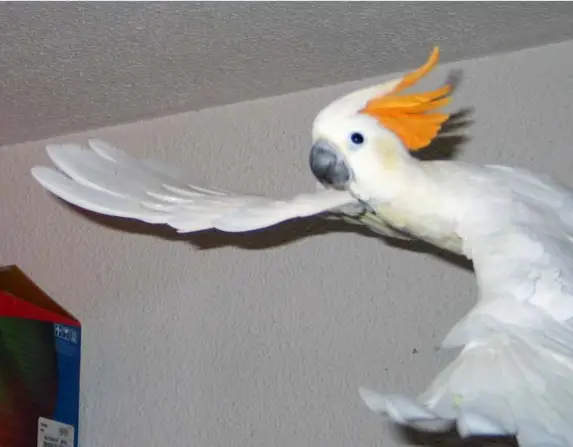
Given all these regrettable observations, what if we gave this little one its wings? Does this mean that everything is settled in the best of all possible worlds? Not quite.
The life of the parrot will be greatly improved because by being able to fly, will be in better physical and mental health. Being confident, he will want to socialize more.
He will be more liveable and, as a result, will likely spend less time in a cage. Isn’t that a better life? On the other hand, if the fact of stealing eliminates many dangers, others, it is true, appear.
Mirrors, windows and glass doors, toilets and sinks filled with water, or even a hot stove are among them. But is it so awful that people want us to believe it? Think of the human toddler, very cute in his playpen.
Soon he will become a little climber-walker. Will the increased risks of his new status confine him to his room or his park forever?
No, obviously! Foresight and supervision will be increased and some barriers, hooks, and caps will appear while the learning is acquired.
Parrots being rather intelligent, they too can learn the prohibitions by providing the same foresight, surveillance, education, and accessorization on our part.
hooks and caps will appear while the learning is acquired. Parrots being rather intelligent, they too can learn the prohibitions by providing the same foresight, surveillance, education, and accessorization on our part.
hooks and caps will appear while the learning is acquired. Parrots being rather intelligent, they too can learn the prohibitions by providing the same foresight, surveillance, education, and accessorization on our part.

What if, by great misfortune, the greatest fear of the parrot human occurs: flight outside? Admit it right away, flight feathers in full or not, the bird is made to fly, what it has wings will be enough to make it soar in the wind.
Moreover, clipped wings give a false sense of security that does not exist when the parrot is flying. The majority of escapes are made by birds with clipped wings because never one would have believed…
In short, if the parrot can fly, it also knows how to navigate and especially descend and land. So, even if the outside situation is scary and difficult, a parrot that masters the flight can flee predators on the ground and in the air and is more likely to know how to descend toward its human,
What to say? The general opinion is that a bird in a house should have its wings clipped. How can we say that the parrot is safer if we can cause injury to it by preventing it from flying? How can we believe that the parrot is safer when we cut its flight when it has to live with predators? How can we make his life easier, when the dangers in the house remain the same, but his way of avoiding them is no longer? How can it be for the good of the parrot that its muscles are atrophied and its respiratory system is functioning at a minimum?
Now that the scales are full of information, which way will it lean: cut or not cut?

